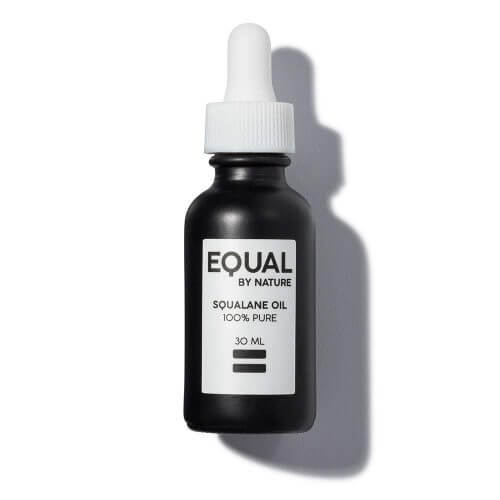
When it comes to beauty and skincare, there is a constant search for innovative and effective ingredients. One such ingredient that has gained significant attention in recent years is squalane. Derived from various natural sources, squalene has become a key player in the beauty industry.
Squalene is a naturally occurring organic compound that is found in both plants and animals. It is a hydrocarbon and a triterpene, which means it belongs to the same family as other beneficial compounds like beta-carotene and coenzyme Q10. However, the most common and abundant source of squalene is shark liver oil. It is worth noting that due to ethical concerns, many cosmetic companies have shifted to plant-derived sources of squalene, such as olives, wheat germ, rice bran, and amaranth seeds.
So, what makes squalene so special?
The answer lies in its remarkable properties and benefits for the skin. “Squalane is a lightweight luxurious- feeling oil that noticeably hydrates and softens skin,” says cosmetic chemist Julie Pefferman, Founder of The Lab & Co. .“Squalane is already present in our skin and makes a great beauty oil because it is deeply hydrating yet suitable for all skin types even sensitive and acne types.”
What makes squalene extraordinary lies in its unique ability to mimic the skin’s natural sebum, which is the oily substance produced by our sebaceous glands. This similarity allows squalene to penetrate deeply into the skin, providing intense hydration without leaving a greasy residue. As a result, it helps to improve skin elasticity, smoothness, and overall texture.
Furthermore, squalene possesses antioxidant properties. Oxidative stress caused by free radicals can lead to premature aging, including wrinkles, fine lines, and age spots. Antioxidants play a crucial role in neutralizing these harmful free radicals, thereby protecting the skin from damage. Squalene acts as a potent antioxidant, shielding the skin from environmental aggressors and reducing the signs of aging.
Squalene vs Squalane: What’s the difference?
Squalene and squalane are both organic compounds that are derived from the same source but differ in their chemical structure and properties.
Squalene is a naturally occurring compound found in various plant and animal sources, including shark liver oil, olive oil, and certain vegetables. It is a hydrocarbon molecule and belongs to a class of compounds called triterpenes. Squalene is a highly unsaturated compound, containing six double bonds, which make it susceptible to oxidation.
Squalane, on the other hand, is a derivative of squalene. It is produced through the hydrogenation (addition of hydrogen) of squalene, which results in a more stable and saturated form. This hydrogenation process removes the double bonds from squalene, making it less prone to oxidation. Squalane is a saturated hydrocarbon and is considered a more stable and shelf-stable version of squalene.
Due to its stability, squalane is commonly used in skincare and cosmetic products as a moisturizing agent and emollient. It has excellent hydrating properties and can help improve the skin’s barrier function, leaving it soft, smooth, and moisturized. Squalane is also non-comedogenic, meaning it is less likely to clog pores, making it suitable for various skin types.
Beautifying Properties
In addition to its moisturizing and antioxidant abilities, squalene also possesses anti-inflammatory properties. Inflammation is a common underlying factor in various skin conditions, including acne, rosacea, and eczema. By reducing inflammation, squalene helps to calm and soothe the skin, promoting a more balanced complexion. It can also aid in the healing process of wounds and blemishes, ensuring a faster recovery.
Another notable benefit of squalene is its compatibility with all skin types. Whether you have dry, oily, sensitive, or combination skin, squalene can work wonders for you. Its lightweight and non-comedogenic nature make it suitable for acne-prone individuals as well. By balancing oil production and maintaining the skin’s natural moisture barrier, squalene helps to regulate sebum and prevent clogged pores.
Mighty Multi-tasker
Apart from its direct impact on the skin, squalene can also enhance the effectiveness of other skincare ingredients. It acts as a carrier, facilitating the absorption of other active compounds into the deeper layers of the skin. This synergy allows for a more potent and targeted delivery of beneficial ingredients, maximizing their effects and improving overall skincare results.
When it comes to incorporating squalene into your skincare routine, there are several options available. “Squalane is in many luxury skin care products because it feels great on the skin and absorbs quickly with a multitude of benefits,” says Pefferman. Many skincare products, ranging from moisturizers and serums to facial oils and cleansers, now feature squalene as a key ingredient, she adds. You can choose products that specifically highlight squalene or opt for those that contain it as part of a comprehensive formulation.
It’s become popular as a stand-alone oil and Pefferman recommends dropping it into your daily moisturizer for a hydration boost or if you are feeling lazy, use it as your only moisturizer…you won’t regret it. “It’s also great all over the body! I recommend Equal by Nature’s Vegan Squalane Oil ($25, Amazon) for beautiful packaged and affordable luxury.”

